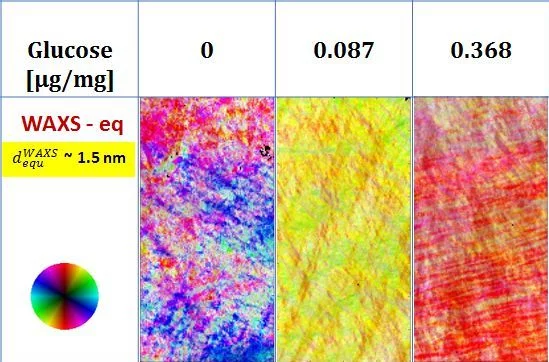Blood glucose supplies energy to cells and is critical for the human brain. Glycation of collagen, the nonenzymatic formation of glucose‐bridges, relates to diseases of aging populations and diabetics. This chemical reaction, together with its biomechanical effects, has been well studied employing animal models. However, the direct impact of glycation on collagen nano‐structure is largely overlooked, and there is a lack of ex vivo model systems. Here, we present the impact of glucose on collagen nanostructure in a model system based on abundantly available connective tissue of farm animals. By combining ex vivo small and wide‐angle X‐ray scattering (SAXS/WAXS) imaging, we characterize intra‐ and inter‐molecular parameters of collagen in decellularized bovine pericardium with picometer precision. We observe three distinct regimes according to glucose concentration. Such a study opens new avenues for inspecting the effects of diabetes mellitus on connective tissues and the influence of therapies on the resulting secondary disorders.
Contact
Dr. Oliver Bunk
Paul Scherrer Institut
E-mail: oliver.bunk@psi.ch
Dr. Cinzia Giannini
Istituto di Cristallografia
Consiglio Nazionale delle Ricerche
E-mail: cinzia.giannini@ic.cnr.it
Original Publication
Cinzia Giannini, Alberta Terzi, Luca Fusaro, Teresa Sibillano, Ana Diaz, Martina Ramella, Viviane Lutz-Bueno, Francesca Boccafoschi, Oliver Bunk
Scanning X‐ray microdiffraction of decellularized pericardium tissue at increasing glucose concentration.
Journal of Biophotonics.
https://doi.org/10.1002/jbio.201900106

